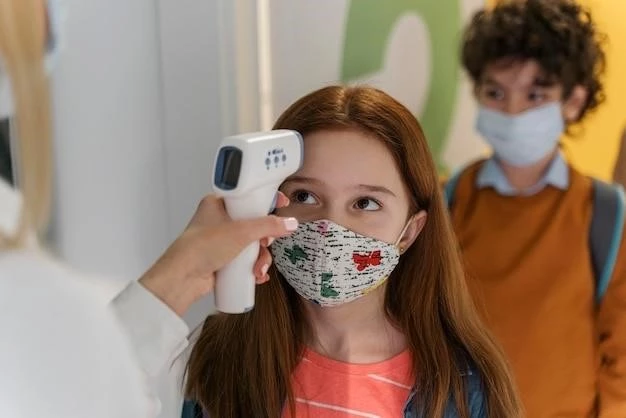Introduction
Multiple pterygium syndromes comprise a group of congenital anomaly disorders characterized by webbing of the neck, elbows, and knees, and joint contractures. The syndromes are categorized into prenatally lethal and nonlethal types.
Overview of Multiple Pterygium Syndrome
Multiple pterygium syndromes consist of a group of congenital anomaly disorders characterized by webbing of the neck, elbows, and knees, with joint contractures. These syndromes can be categorized as prenatally lethal or nonlethal types, presenting with various clinical features such as pterygia, muscle weakness, growth retardation, and facial abnormalities. The conditions are genetically and phenotypically diverse, with distinct classifications based on their severity and associated anomalies.
Clinical Features
Multiple pterygium syndrome often presents with features such as webbing of the neck, elbows, and knees, joint contractures, muscle weakness, growth retardation, facial abnormalities, and even vertebral anomalies. These symptoms can vary in severity depending on the specific type of the syndrome.
Characteristic Symptoms
Characteristic symptoms of multiple pterygium syndrome include webbing of the neck, elbows, and knees, joint contractures, muscle weakness, growth retardation, facial abnormalities, vertebral anomalies, and restricted joint mobility. These features are integral to diagnosing and classifying different types of the syndrome. Individuals with lethal multiple pterygium syndrome (LMPS) may exhibit more severe symptoms leading to prenatal growth failure, muscle weakness, and arthrogryposis.
Lethal Multiple Pterygium Syndrome (LMPS)
Lethal multiple pterygium syndrome (LMPS) is a devastating condition characterized by prenatal growth failure, severe arthrogryposis, and muscle weakness. Affected individuals often exhibit pterygia in various areas, leading to significant complications during fetal development. The syndrome is associated with a high mortality rate, emphasizing the critical need for early detection and management strategies.
Genetic Basis
The genetic basis of multiple pterygium syndrome involves mutations in the CHRNG gene, responsible for coding the gamma (γ) protein subunit of the acetylcholine receptor. These mutations lead to webbing of the skin and lack of muscle movement before birth, contributing to the syndrome’s manifestation.
CHRNG Gene Mutations
Mutations in the CHRNG gene are responsible for most cases of multiple pterygium syndrome. These mutations lead to the characteristic features of the syndrome, including skin webbing (pterygium) and restricted muscle movement (akinesia) before birth. Understanding these gene mutations is crucial for diagnosing and managing the condition.
Autosomal Recessive Inheritance
Multiple pterygium syndrome follows an autosomal recessive pattern of inheritance, meaning that two copies of an abnormal gene are needed to manifest the disorder. Individuals inherit one mutated gene from each parent, leading to the characteristic features of the syndrome. Understanding the genetic basis and inheritance pattern is essential for genetic counseling and risk assessment.

Diagnosis
Diagnosing multiple pterygium syndrome involves identifying characteristic features such as joint contractures, skin webbing, muscle weakness, growth retardation, and facial abnormalities. Confirmation of the syndrome may require genetic testing to detect CHRNG gene mutations indicative of the condition.
Identification of Pterygium
Diagnosing multiple pterygium syndrome involves identifying characteristic skin webbing (pterygia) in various areas such as the neck, elbows, knees, and other joints. This visual identification is crucial alongside recognizing associated joint contractures and muscle weakness for a definitive diagnosis.
Confirmation of Syndrome
Confirming multiple pterygium syndrome involves assessing the presence of characteristic features such as skin webbing, joint contractures, muscle weakness, growth retardation, and facial anomalies. Additional genetic testing for CHRNG gene mutations aids in definitively diagnosing the syndrome.
Types of Multiple Pterygium Syndrome
Multiple Pterygium Syndrome can be classified into lethal types like Lethal Multiple Pterygium Syndrome (LMPS) and nonlethal types such as the Escobar Type, each with its specific characteristics and impact.
Escobar Type
The Escobar type of multiple pterygium syndrome is characterized by skin webbing (pterygium) and a lack of muscle movement (akinesia) before birth. These manifestations typically affect areas like the neck, fingers, elbows, and knees, often leading to restricted joint mobility known as arthrogryposis.
Nonlethal Type
Nonlethal type multiple pterygium syndrome, also known as Escobar type, presents with features such as skin webbing (pterygia) and muscle movement limitations (akinesia) before birth. These characteristics primarily affect the neck, fingers, elbows, and knees, often leading to joint restrictions known as arthrogryposis.
Treatment and Management
Managing multiple pterygium syndrome involves interventions to address joint contractures and growth retardation. Physical therapy and orthopedic devices are used for joint flexibility, and nutritional and hormonal interventions can help in managing growth deficiencies associated with the syndrome.
Management of Joint Contractures
Management of joint contractures in multiple pterygium syndrome involves physical therapy, orthopedic interventions, and splinting to improve joint flexibility and mobility. Early intervention is crucial to prevent further joint limitations and improve functional outcomes for individuals with the syndrome.
Intervention for Growth Retardation
Interventions for growth retardation in multiple pterygium syndrome may involve nutritional support, hormone therapy, and monitoring growth milestones closely. Managing growth deficiencies can improve overall health outcomes and quality of life for individuals affected by the syndrome.
Prognosis
Individuals with multiple pterygium syndrome have diverse outcomes based on the severity of the symptoms, type of syndrome, and early interventions. Understanding the prognosis for these individuals can help guide treatment strategies and support their long-term well-being.
Outcomes for Individuals with MPS
The outcomes for individuals with multiple pterygium syndrome vary widely based on the severity of the symptoms, genetic factors, and early interventions. Understanding the diverse outcomes can help tailor treatment plans and support services for affected individuals.

Research and Studies
Recent findings on multiple pterygium syndrome research have led to advancements in treatment approaches, emphasizing early interventions, genetic testing for CHRNG gene mutations, and tailored management strategies based on the syndrome’s diverse outcomes.
Recent Findings on MPS
Recent research on multiple pterygium syndrome has focused on identifying genetic mutations, understanding the pathophysiology of joint contractures and muscle weakness, and exploring novel treatment modalities such as gene therapy. Advances in genetic testing technology have improved diagnostic accuracy and provided insights into personalized management approaches for individuals with MPS.
Advancements in Treatment Approaches
Recent advancements in the treatment of multiple pterygium syndrome have focused on early interventions, physical therapy, orthopedic devices, and innovative approaches like gene therapy. Tailored management strategies aim to improve joint flexibility, muscle strength, and overall functional outcomes in individuals with the syndrome.
Support and Resources
For individuals with Multiple Pterygium Syndrome, various patient organizations and rare disease assistance programs provide support, resources, and information on this rare genetic disorder. These organizations can offer valuable assistance in managing the condition and connecting with others facing similar challenges.
Patient Organizations
For individuals and families impacted by Multiple Pterygium Syndrome, patient organizations provide valuable support, resources, and connections to a community that understands the challenges and complexities of living with this rare genetic disorder. These organizations offer information, advocacy, and a network of support for navigating the medical, social, and emotional aspects of the syndrome.
Rare Disease Assistance Programs
Rare disease assistance programs offer crucial support and resources for individuals affected by Multiple Pterygium Syndrome. These programs provide valuable information, financial assistance, advocacy, and community connections to help navigate the challenges of living with this rare genetic disorder.
